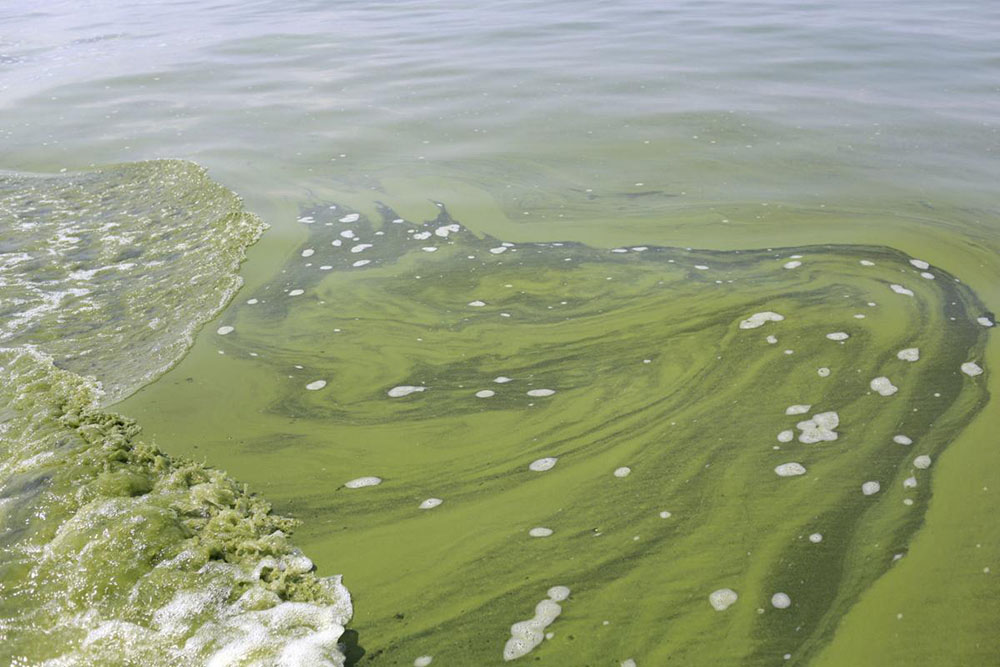
Protecting Adirondack Waters | Addressing Septic System Pollution
By: David Miller - Adirondack Council Clean Water Program Coordinator
Monday, October 18, 2021
In my first clean water blog over the summer, I discussed the adverse impacts of our aging community clean water infrastructure on the Adirondack Park’s water resources. I also emphasized the importance of government investments to upgrade the Park’s wastewater treatment plants and sewer systems. New York State has been a leader in allocating grant funds to towns in need of this work which is essential to accomplish our clean water goals. Since then, the 2021 grant process for Adirondack towns to apply for these funds has been opened, and the Adirondack Council is supporting communities in their grant applications to address a backlog of critical clean water sewer projects. These projects will be essential in upgrading and/or repairing these aging sewer systems.
Septic System Pollution
While this work is ongoing, there is another critical clean water issue that impacts the water quality of our Adirondack lakes, rivers, and streams - septic system pollution. Most Adirondack residents living outside hamlets rely on septic systems and tanks to dispose of and treat their wastewater. For many of us, our septic systems are out of sight and out of mind. Without knowing, homeowners’ old and failing septic systems can cause serious water quality problems. Human waste can degrade water bodies with impacts ranging from elevated bacteria levels to contributing to the creation of harmful algal blooms.
 Algal Bloom
Algal Bloom
Council Studies Issued
In response, last May, the Adirondack Council produced a comprehensive White Paper entitled Protecting Adirondack Waters from Septic System Pollution. The report not only identifies the water quality threats from failing septic systems but also provides a blueprint on how Adirondack Park residents and communities and state officials can work together to upgrade existing septic systems to protect our precious Adirondack waters. Through collaboration with partners like the Lake George Association and others, the Adirondack Council called for increased homeowner education, expanded local septic system inspections, and the use of technologies to advance the effectiveness of these systems. The Council has also called for increased funding from the NYS Septic System Replacement Grant Program that is dedicated to the North Country to help residents that live along our lakes, rivers, and streams finance these improvements.
This report also highlights model programs in the Lake George basin that reduce the impacts caused by septic system pollution. With several communities on Lake George developing inspection programs and local groups providing homeowner education, the Lake George Commission has also taken up the issue and is embarking upon a Septic System Study encompassing all of its lakeshore communities. The purpose of the study is to identify the threats from failing septic systems on its shores and the steps to remediate them. The Lake George Commission has the regulatory powers necessary to protect the Lake’s water quality and is considering new requirements such as a periodic septic inspection program for all of its landowners.

The Right Solutions to Protect Water Quality
While these are only the first steps to comprehensively address septic system pollution, what is learned and enacted on the shores of Lake George in the months ahead can be a lesson for other Adirondack communities as they face similar challenges. The Adirondack Council is engaged with our Lake George environmental partners to bring this effort forward with the best solutions for all concerned. With these new strategies available to us, we can ensure that the right solutions are chosen not only for Lake George but for other Adirondack lakes and watershed communities as well. Whether on Raquette Lake, Upper Saranac, or on the shores of Lake Champlain, septic system pollution is a major concern and has become a Park-wide issue.
By working with residents, environmental groups, and local and state officials, we can make progress on this critical issue and enact programs that truly protect the pristine waters of the Adirondack Park. We urge you to get involved and support this cause. If you have a septic system in the Adirondacks, learn about and evaluate the effectiveness of your own system, promote septic system remediation programs in your area, and support state funding for the protection of our Adirondack waters.
Together we can turn the tide on the adverse impacts of septic system pollution and protect our greatest asset, clean water.

David has been the Council’s Clean Water Program Coordinator since 2016 as a consultant and joined the Adirondack Council staff in January of 2021 as a part-time employee. He has researched and written reports aimed toward clean water solutions for the Adirondacks. David works with other stakeholders on clean water infrastructure needs and septic system pollution issues in the Park. He also assists with the Council’s road salt pollution campaign and the need for expanded water quality monitoring programs in the Park.




